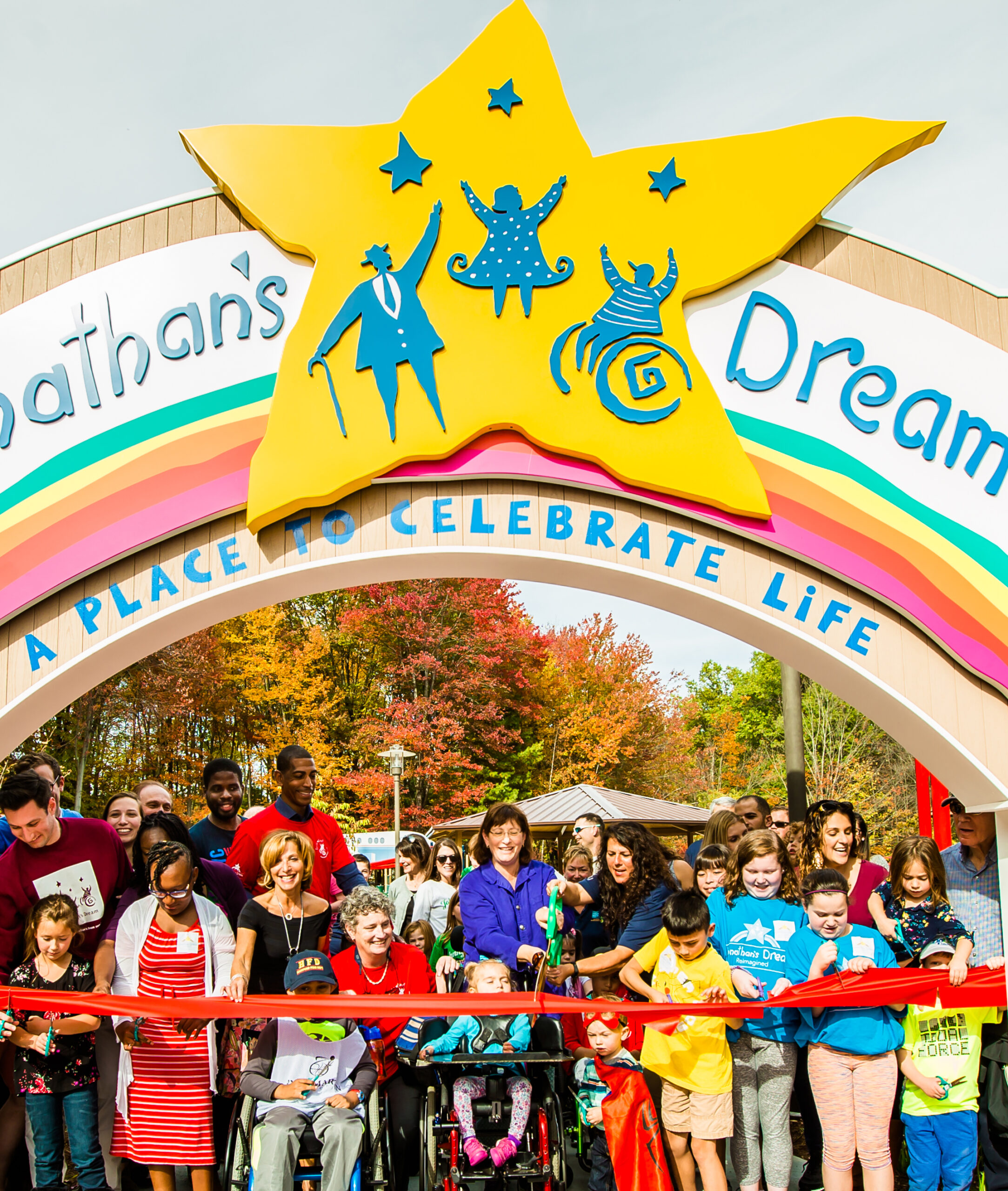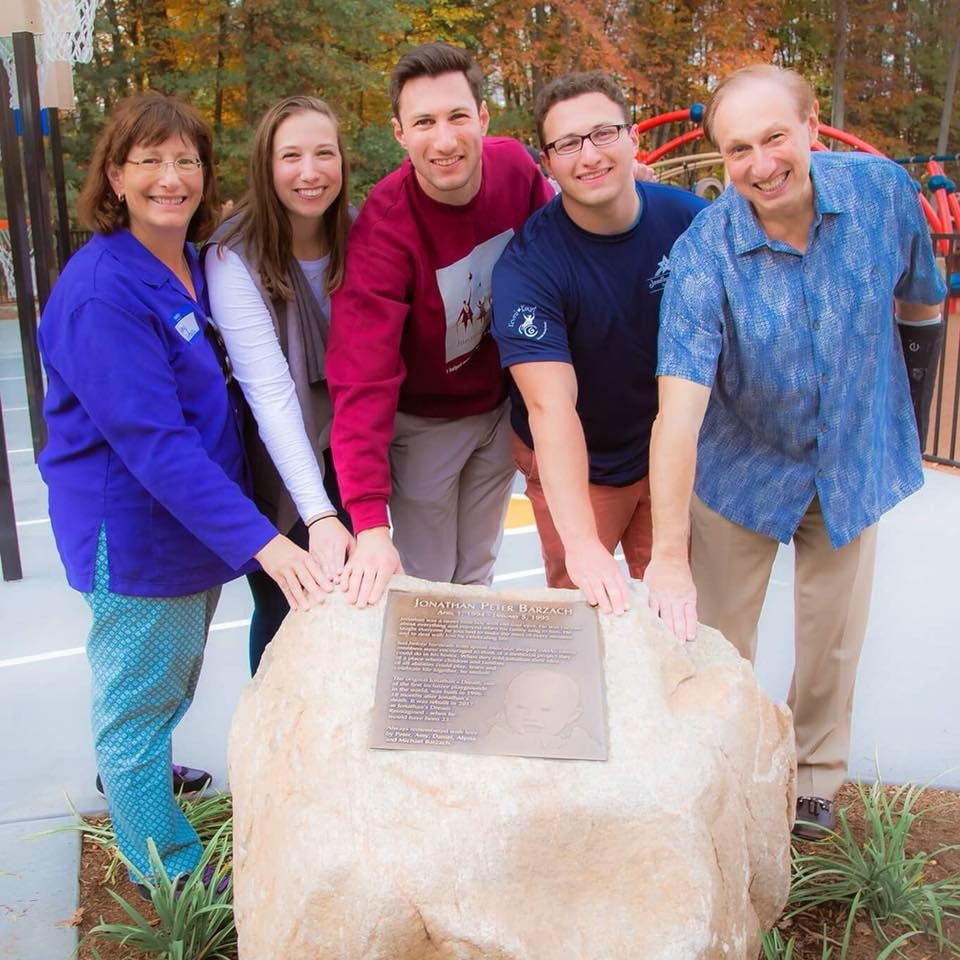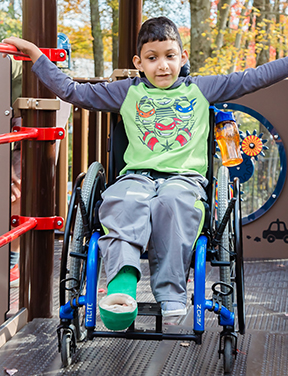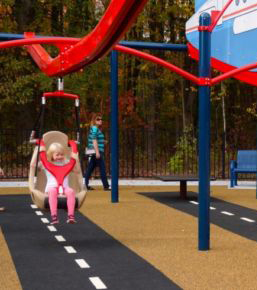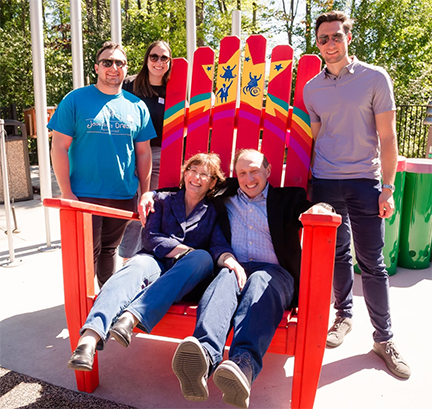The grief counselor went on to say, “My normal response would be to hold her hand and say, ‘I understand the magnitude of this loss.’ I found myself saying in a strong voice, ‘You are going to make use of every part of your degrees and work experience to make meaning of this child’s life. He came here for a reason. He’s inspiring you for some legacy, some meaning. You need to find that. I’m sending you out on a mission to find the meaning of his life. What is he teaching us? What is his purpose?”
For three months after her son Jonathan died from spinal muscular atrophy, Amy says, “I couldn’t get out of bed, my heart was so broken.” Together with her husband Peter Barzach, they decided to do something for other children in Jonathan’s honor. On what would have been Jonathan’s first birthday, April 1, 1995, Amy and Peter brought in a musician to perform and gave books to every child in the hospital where Jonathan had been.
Seeing the smiles on the children’s faces inspired them to want to do more. They remembered seeing a girl in a wheelchair sadly watching the other children play on a playground she couldn’t get to or play on. If Jonathan had lived, Amy thought, he would have needed a wheelchair and been left out just like that little girl. At first, the family just wanted to do something simple by providing a piece of inclusive equipment in Jonathan’s memory, says Peter Barzach. “We never imagined it was going to be as much of a movement as it turned out to be.”
Amy worked in marketing and community relations for The Hutensky Group, a shopping center development and management company, and Peter worked as a general manager for one of United Technologies’ business units.
“You never really know the cards you’re going to be dealt and how you’re going to react. We were active in the community and volunteered with local nonprofits,” he says. “This was much more personal. It became a lot more than being involved. Jonathan’s life opened our eyes to a huge need, and we found meaning in honoring Jonathan’s life this way.”
The Barzachs held ‘dreaming and design’ parties where children with and without disabilities, including children who used wheelchairs or had other physical challenges, imagined their ideal playgrounds. One young boy, Matt Cavedon, designed a glider boat swing, saying, if he could make the boat move with his motorized wheelchair, maybe other kids would want to play with him.
Physical and occupational therapists, child development experts, parks and recreation professionals and doctors consulted, and the project benefited from working with a community build playground company that translated all of the ideas into the original Jonathan’s Dream. At the time, the only option for making an inclusive playground meant building it by hand out of wood and composite lumber donated by Hartford Lumber Company and Trex, the company that manufactured it.
Planning, fundraising, and project management with the help of a team of dedicated project leaders and more than 1,000 volunteers and donors resulted in Jonathan’s Dream opening on October 22, 1996, in West Hartford, Connecticut. It was one of the nation’s first inclusive playgrounds. From start to finish the project took 18 months.
The original Jonathan’s Dream was one of the first inclusive playgrounds in the United States when it was built in 1996. It included a treehouse where every child could be king or queen of the hill and get to the highest parts; a train, musical instruments, and swings with high backs to support children.
When Amy first approached the JCC to request permission to build an inclusive community playground on their campus, board members had a lot of questions. This was a very new idea and there were only a few playgrounds like this in the country at the time.
“The request prompted board members to ask, ‘What do you mean?’” says Joyce Mandell, a member of the JCC board at the time. Board members asked if focus groups had been done to see if the need existed. “We pictured a playground like this being at a hospital not in the community,” she says.
After the meeting, Amy invited Joyce to join her on a road trip to visit an inclusive playground at Boston College’s Campus School. They saw a glider swing designed so whole families could ride together (children who used wheelchairs could enjoy it and so could families with babies in strollers) and a sand box table that made it possible for children who used wheelchairs to comfortably play in the sand, Joyce says. The playground also included ramps and bridges that brought children with disabilities to the middle of the fun and easy-to-reach outdoor musical instruments. As they sat together on the glider boat swing that day, Joyce says, “We realized the playground would be fun for all children.”
That was all it took. “From that moment on, I carried the flag too,” Joyce says. When she returned home, she called her niece, a graphic designer, and asked her to design a logo to convey the concept of an inclusive playground. Joyce and Amy talked about including a grandparent in the logo to represent Jonathan’s Dream serving people of all ages in addition to all abilities. Joyce became a leading advocate, and the JCC board members became supporters too. The idea blossomed to build an entire inclusive playground complete with slides, swings, a treehouse, a train, and musical instruments.
The Americans with Disabilities Act (ADA) was signed into law in 1990 but its mandates took time to implement. And requirements for playgrounds outlined in the ADA called for them to “accessible” but not necessarily inclusive. As Amy points out, “A playground could meet ADA requirements but a child who used a wheelchair would have to use transfer steps to access the play structure. This means the child would have to leave their wheelchair on the ground. Since their wheelchair is their mobility, for most children who use wheelchairs, this is not a viable option.”
To get community buy in, people would have to be sold on the whole idea of inclusive playgrounds. Barzach talked to any group that would listen. “She’s the one who took the show on the road,” Joyce says. “She was the one who carried the load.” Amy says, “Joyce was someone I could always count on. She was resourceful and good at helping me explore options and figure out how to move forward,” Amy says. “Joyce and her family also became major donors and helped attract other donations,” she says. As word spread through the community and beyond, volunteers and funding came through.
Finally, in 1996, master carpenters and captains led teams of volunteers who gathered for five days in October at the half-acre site to build the playground by hand. Four-year-old Daniel Barzach, Jonathan’s older brother, served as the junior project manager.
Amy’s drive and vision helped her work through obstacles and her grief because “she could see Jonathan in every child,” says Sharon Massoth, the grief counselor. She processed her grief by giving children joy, by giving them a chance to be kids. Carrying out this mission “opened her heart and filled her heart,” she adds. “When your heart is broken, when you find that you can give other parents hope, that just opens your heart.”




